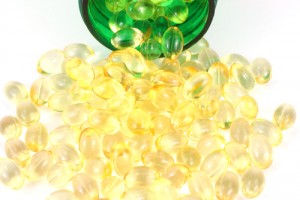 Guess what’s making a comeback? The Stones? The Macarena? Nope – Rickets! Does it sound familiar? If so – it’s likely from some Dicken’s novel about starving orphans. But, the fact is that Rickets – a disease that originates from a Vitamin D deficiency and presents as delayed growth, muscle weakness and pain in the leg, spine and pelvis – is an upwardly mobile disease that is showing up in wealthy as well as destitute communities.
Guess what’s making a comeback? The Stones? The Macarena? Nope – Rickets! Does it sound familiar? If so – it’s likely from some Dicken’s novel about starving orphans. But, the fact is that Rickets – a disease that originates from a Vitamin D deficiency and presents as delayed growth, muscle weakness and pain in the leg, spine and pelvis – is an upwardly mobile disease that is showing up in wealthy as well as destitute communities.
 There are two ways to get Vitamin D – sunlight (Guidelines about sunlight and Vitamin D exposure) and supplementation (Vitamin D Supplementation). Those links go into detail about the best ways to get Vitamin D from each other those sources, but I’ll summarize.
There are two ways to get Vitamin D – sunlight (Guidelines about sunlight and Vitamin D exposure) and supplementation (Vitamin D Supplementation). Those links go into detail about the best ways to get Vitamin D from each other those sources, but I’ll summarize.
Sunlight: Vit D is manufactured in the skin from exposure to sunlight. The rule of thumb is that you are “full up” on Vit D in about half the time as it takes for your skin to turn pink. For light skinned folks, in a swimsuit during the summer from 11am to 2pm – that is about SIX MINUTES. So when you go to the beach, spend your first 5 – 10 minutes setting up – THEN slather the sunscreen, as sunscreen interferes with those UVB rays that our body needs. Sun exposure to hands and face are not so effective – the torso is the most effective area to expose to sunlight – so don’t feel bad about that beer belly, guys. Take off the shirt and get your Vit D!
Supplementation: Vitamin D3 and D2 both seem to be effective in bumping serum levels of Vitamin D. Although the Vitamin D Council tends to see Vitamin D3 as most closely resembling the Vitamin D the body manufactures – and therefore recommends that form. There are also studies that show tanning beds offer a boost in serum D levels. But remember how long it takes to “fill up” on Vitamin D in the sun? That applies for tanning beds too. Six minutes! Overexposure offers no additional benefit since your body has an “auto shut off” valve. When it’s made enough Vit D – it stops making it so there can be no toxicity.
 Let’s talk dosage…The Vitamin D Council recommends dosages ranging from 1,000 IU daily for children under 1 to 6,000 IU for pregnant and lactating mothers. Please read their dosage suggestions and related information. Basically research is showing that the current suggested supplementation limits set by the U.S. are inadequate considering the new information that Vit D is responsible for more than bone health and calcium regulation. Over the years, Vit D has been found to be intrinsic for well-functioning immune, respiratory and neurological systems as well as other functions. Test levels of Vitamin D should be around 50 ng/mL (125 nmol/L). Most labs use lower limits – but these are felt to be outdated.
Let’s talk dosage…The Vitamin D Council recommends dosages ranging from 1,000 IU daily for children under 1 to 6,000 IU for pregnant and lactating mothers. Please read their dosage suggestions and related information. Basically research is showing that the current suggested supplementation limits set by the U.S. are inadequate considering the new information that Vit D is responsible for more than bone health and calcium regulation. Over the years, Vit D has been found to be intrinsic for well-functioning immune, respiratory and neurological systems as well as other functions. Test levels of Vitamin D should be around 50 ng/mL (125 nmol/L). Most labs use lower limits – but these are felt to be outdated.
Signs of Vit D deficiency are variable (pain, weakness, depression) and sometimes not noticed. It is important to have levels checked. Ask your doctor for a 25-hydroxyvitamin D, or 25(OH)D, test. In the past, incorrect tests have been used to ascertain Vit D levels.
Vit D is a fat soluble vitamin (meaning the body stores it for use later), so it is a vitamin you can “over do”. This section from the Vitamin D council goes into depth about Vitamin D supplementation and discusses upper limits of supplementation, different forms of supplementation as well as health precautions and drug interactions.
Do your THINKING homework and read.
Then schedule an appointment with your doc, or order one of the Vit D council’s At Home Vit D tests, and start supplementing at the right level.
Cheers to a happy (and healthy) Winter Season!
~ LuvBug
* For more by LuvBug, please click here
















